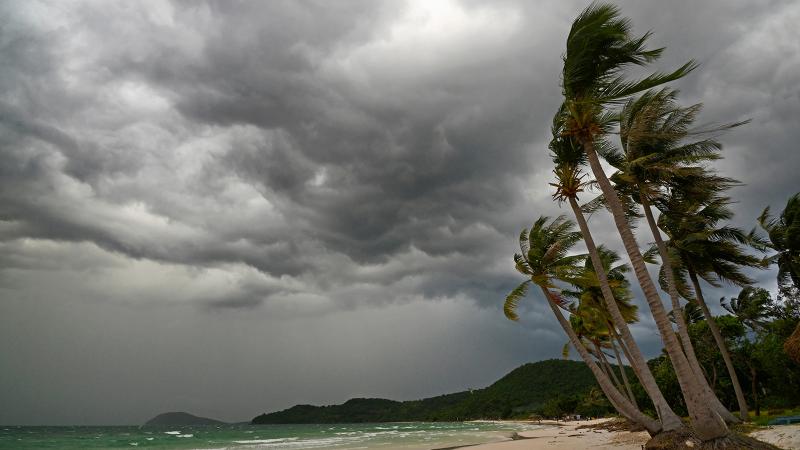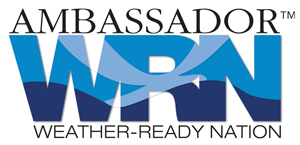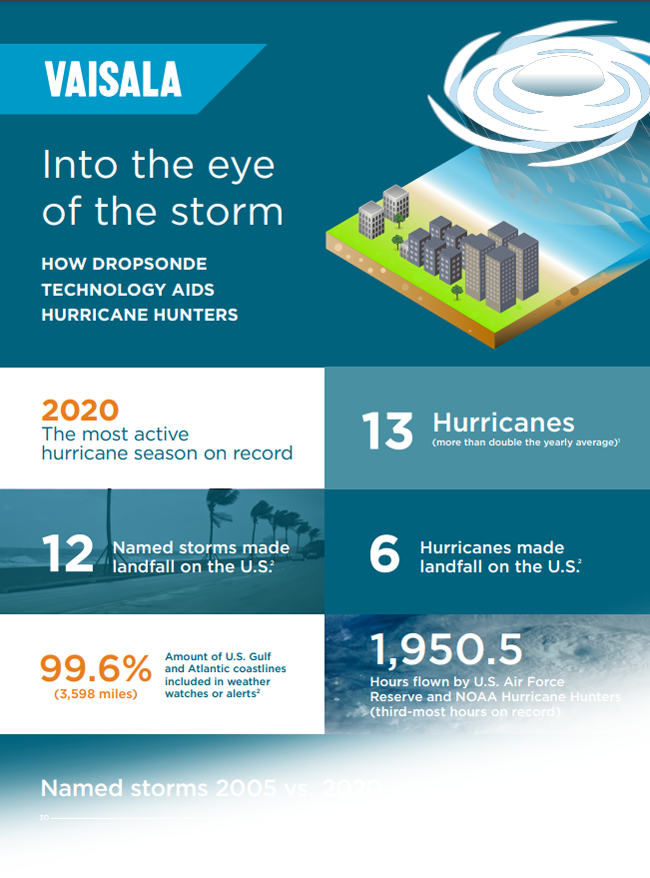Discover more about hurricanes to prepare for them better
Even though the Atlantic has been quiet for the past month, the 2021 Hurricane Season got off to a record start, and the peak of the season is quickly approaching. Because tropical cyclones can cause significant damage, threaten lives, and impact the economy, it’s important to prepare for them. If you live in a hurricane prone region, Ready.gov is an excellent resource to help you prepare for potential hurricanes. But did you know that scientists, including some who work at Vaisala, are working year-round to better understand hurricanes to improve hurricane forecasts?
Hurricanes spend most of their lifecycle over the open oceans, making it difficult to study how and why they develop the way they do. Much of the data we receive about these cyclones come from satellites thousands of miles above the storm. However, scientists can get more information about the structure of the storms with tools from Vaisala, including data from Global Lightning Dataset GLD360 and RD41 dropsondes.
Dropsondes measure the true intensity of storms
Dropsonde technology has been in use for nearly 40 years, with Vaisala providing the measurement sensors for about 25 years. Developed by the National Center for Atmospheric Research and manufactured by Vaisala*, these devices are released into tropical cyclones to measure temperature, humidity, air pressure, wind speed, and wind direction throughout the storm. This information is used by meteorologists to analyze how strong the tropical cyclone is and to feed computer models to improve track and intensity forecasts.
The same measurement technology that powers the RS41 radiosonde makes the RD41 dropsonde the highest quality tool for measuring the most intense storms on Earth. The profiles that come from the dropsonde data are also used to help scientists improve their understanding of the structure of hurricanes, enabling better forecasts and warnings in the future.
Lightning data reveals storm structure
Areas of lightning in tropical storms are regions where there is stronger convection and higher winds. Scientists are working to understand how storm intensity will change based on how much lightning is occurring and where in the storm it is occurring. A significant challenge for meteorologists is forecasting rapid intensification – when a storm’s winds increase by 30 miles per hour or more in 24 hours or less. Of the strongest hurricanes to hit the United States, they were only tropical storms within three days of landfall.
In 2017, Vaisala scientists used lightning data from GLD360 to identify a unique lightning signature in strong hurricanes around the world. Hurricanes that exhibit the Enveloped Eyewall Lightning Signature tend to be stronger than storms that don’t have the signature.
Research is ongoing to compare lightning data and hurricane intensity data to see if there is a relationship in lightning amount, its location, and intensity changes in tropical cyclones.
Weather-ready for the storm
As hurricane season accelerates, Vaisala is ready for whatever happens. Our lightning networks have uptime better than 99.99%, and we have worked hard to ensure a full supply of dropsondes for the Hurricane Hunters. So whether the season is busy or quiet, Vaisala technology will provide the data needed for the best forecasts.
*) Vaisala Inc., USA, manufactures and markets the Dropsonde RD41 and AVAPS Dropsonde Receiving System under license to University Corporation for Atmospheric Research Foundation (UCARF). The dropsonde and receiving system hardware and software have been developed at the Earth Observing Laboratory (EOL) of the National Center of Atmospheric Research (NCAR), in Boulder, Colorado, USA. AVAPS is a registered trademark of the University Corporation for Atmospheric Research.





Add new comment